When it comes to spectacular natural wonders, nothing in the United States comes close to the magical landscapes of the Southwest. And trust me — you’ll want to see it all.
From the rugged terrains of Utah, dotted with mesas, plateaus, and river-eroded canyons, to the deserted lands of Arizona full of saguaros, the American Southwest is a must-see destination.
You can draw many comparisons between the different national parks in the Southwest, but this guide focuses on the two that partially owe their existence to the mighty Colorado River.
Grand Canyon and Canyonlands offer breathtaking scenery you can easily explore through hiking, mule riding, rock climbing, and backpacking.
But before getting into the nitty-gritty of each park, here’s a breakdown of the main similarities and differences between Canyonlands and Grand Canyon.
📌 Save this to Pinterest!
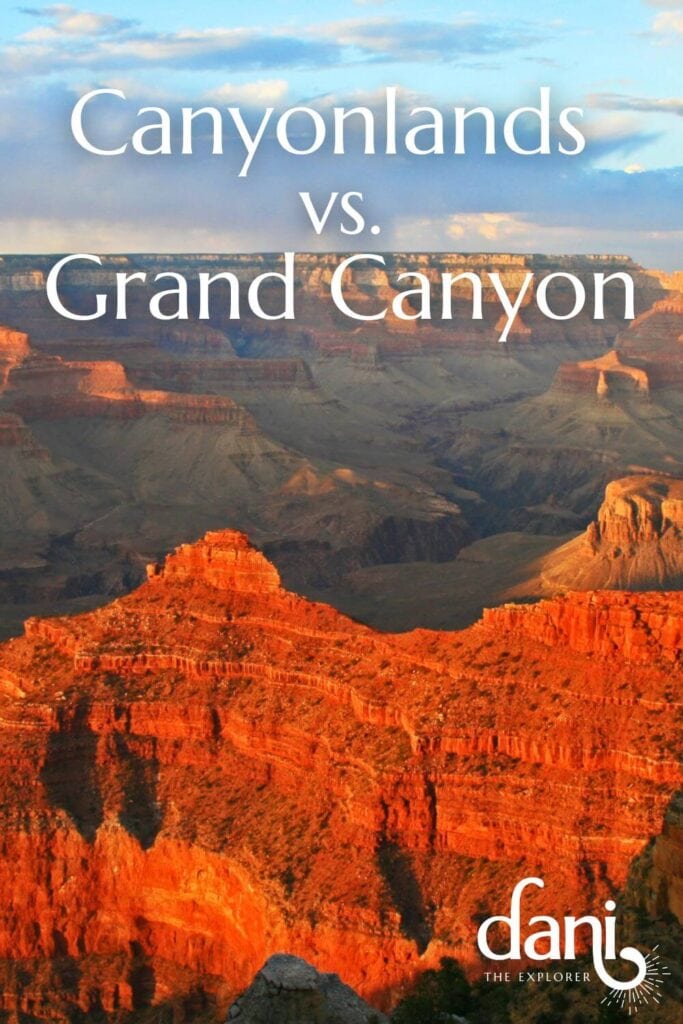
Canyonlands vs. Grand Canyon — The Breakdown

It’s not hard to see the most obvious similarity between the two national parks – it’s in the names.
Both the Grand Canyon and Canyonlands were carved out by the Colorado River, with the Green River also playing a major role in creating the Canyonlands.
Have a look at these similarities and differences that make Canyonlands and Grand Canyon national parks a must-add to your Southwest itinerary.
Canyonlands vs. Grand Canyon: Similarities
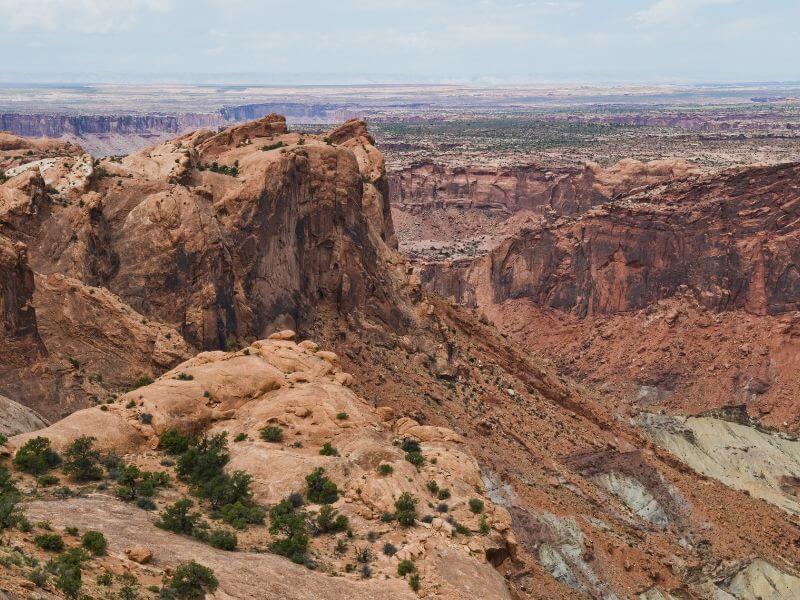
Some similarities between Canyonlands and Grand Canyon are:
Popularity
Both Canyonlands and Grand Canyon are among the most visited national parks in the Southwest Region of the United States.
Canyonlands is one of Utah’s Mighty Five, and the Grand Canyon is an unskippable stop on any Arizona road trip.
Bottom-Up Views
You can see both national parks from top to bottom.
Numerous hiking trails take you from the surface all the way down to the canyon floors. You’ll get picturesque overlooks and viewpoints at every turn.
Scorching Summer Weather
Both national parks experience extremely hot temperatures, especially in summer.
Canyonlands temperature averages about 92°F, while the Grand Canyon reaches about 93°F.
Canyonlands vs. Grand Canyon: Differences
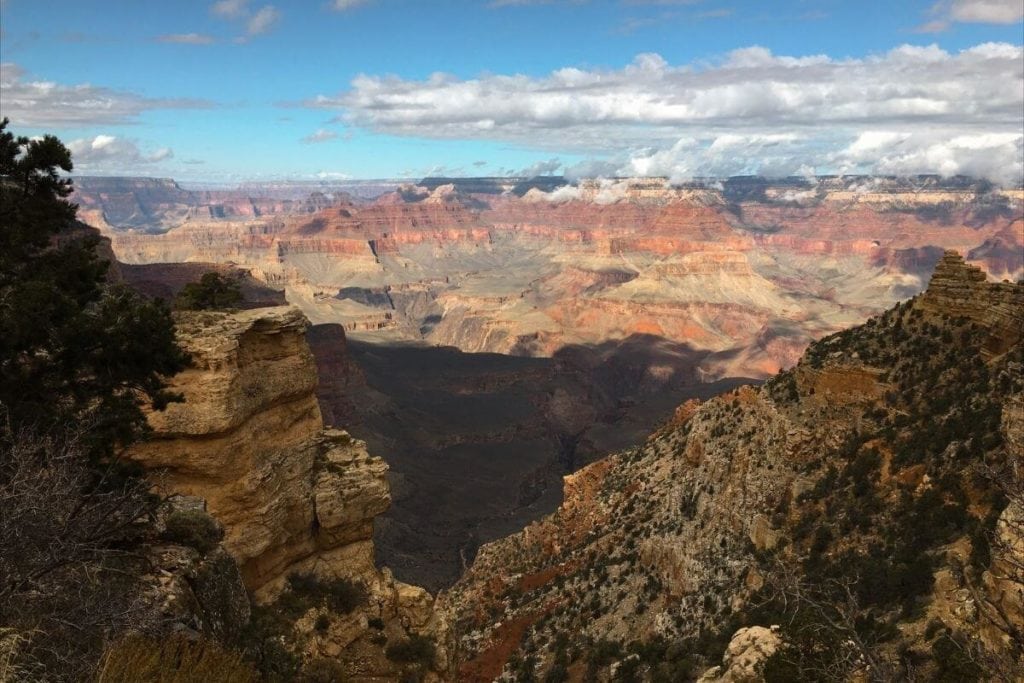
Some key differences between Canyonlands and Grand Canyon are:
Shape and Size
Although these national parks look the same, Canyonlands is more of a giant open crater.
The Grand Canyon is made up of a series of deep canyons.
The Canyonlands and Grand Canyon size comparison is 337,570 to 1,218,375 acres.
Location
Both national parks are located in the Southwest, but Canyonlands is in Utah, and the Grand Canyon is in Arizona.
You can actually drive from one park to another by taking an Arizona to Utah road trip.
It’ll take you about five to six hours to complete.
Accessibility
To see the Grand Canyon from the bottom up, you’ll have to take one of the long, strenuous hikes to the canyon floor.
But to see Canyonlands in this way, you can do so with a quick drive.
Which Park is Better?
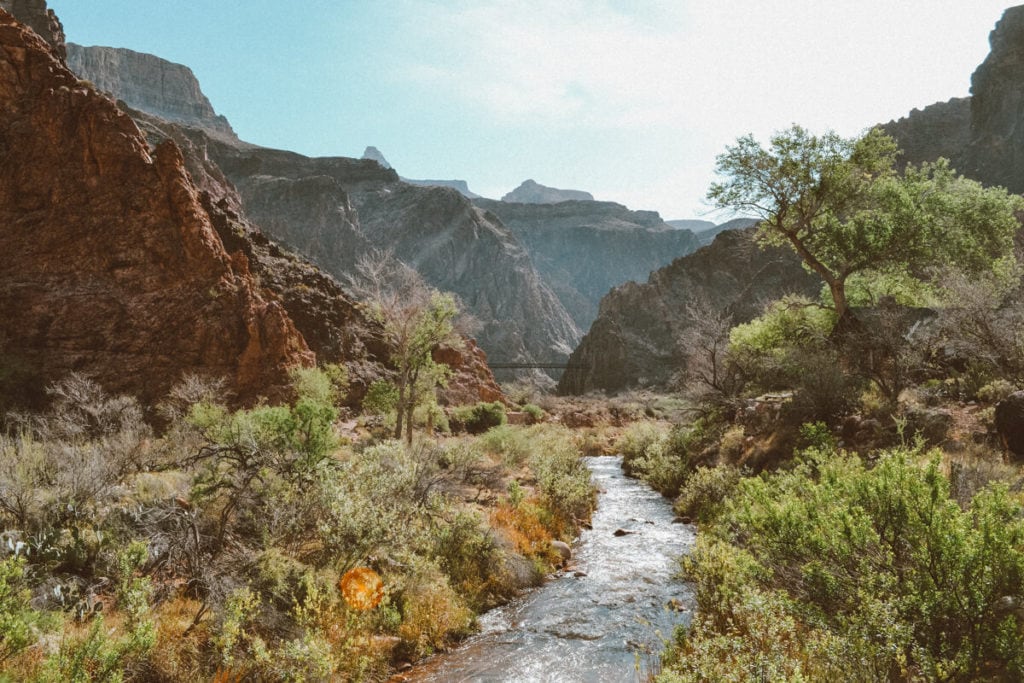
It’s difficult to compare the two parks because they both have so many great qualities. But here is a look into each national park so you can decide for yourself.
Getting to Know Canyonlands National Park
Canyonlands is divided into four unique districts, each offering a landscape and sightseeing opportunities that radically differ from the others.
Island in the Sky
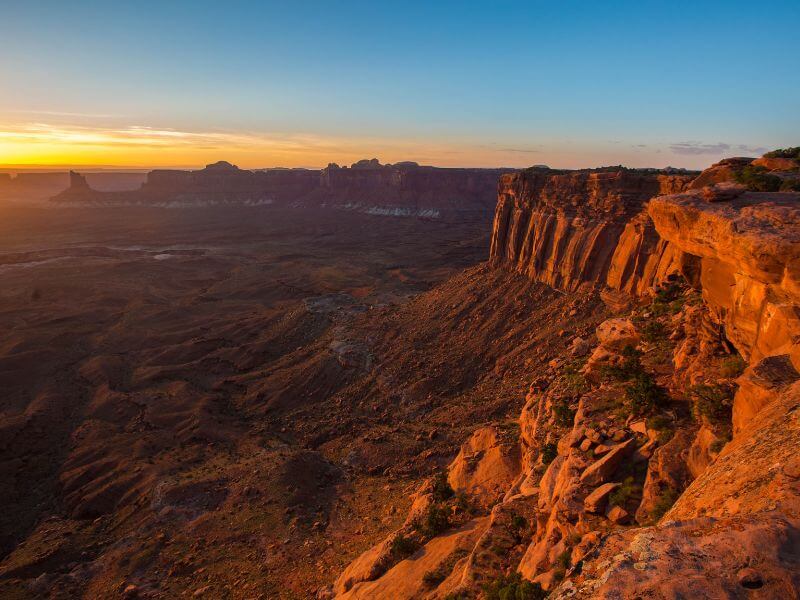
The park’s most visited section – Island in the Sky, is a mesa resting atop sandstone cliffs with sheer drops of over 1,000 feet.
This vantage point offers sweeping views of the Canyonlands.
You’ll find multiple pullouts and overlooks along the scenic drive that can easily be explored via the hiking trails or a guided 4×4 tour.
The Needles
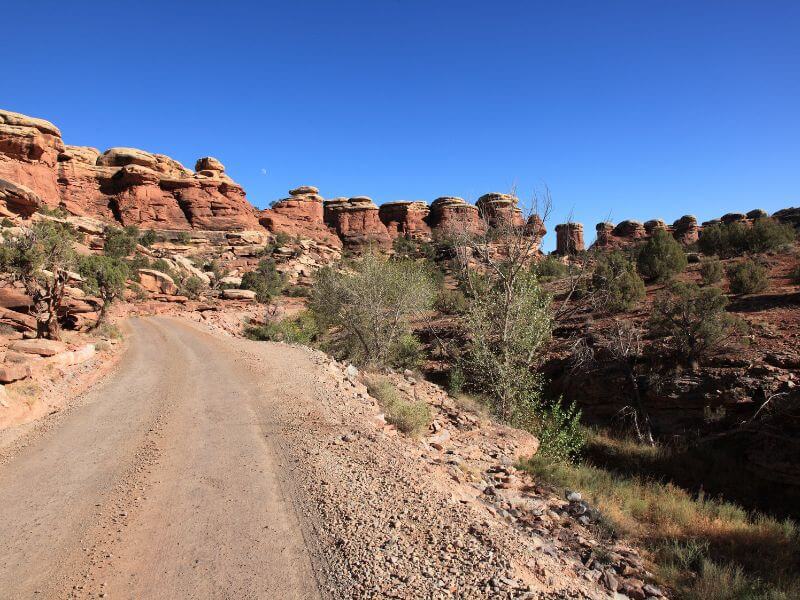
Named after the multi-colored sandstone spires that dominate the landscape, The Needles district sits in the southeastern corner of the Canyonlands.
This section is quite remote, making it perfect for long day hikes and overnight stays.
You can also take a 4×4 drive through the district if time is limited.
The Maze

This district is characterized by towering red-rock mesas topped with white bands.
This is the park’s most remote section, so don’t expect crowds. The district has the least developed roads and trails within Canyonlands, so you’ll require more time to explore it.
You’ll also need to bring survival gear for self-rescue, as visitor centers and amenities are rare in this district.
The Rivers

Last but certainly not least, the fourth section of Canyonlands is made up of The Rivers that traverse through the park.
The Colorado and Green rivers cut through the heart of the national park.
They flow upstream towards The Confluence, making them ideal for kayaking, canoeing, and river rafting.
Best Time To Visit

The best time to visit is when the weather in the Canyonlands is not scorching hot. So spring and fall are ideal seasons to visit.
Early spring begins in March with cold temperatures and moderate showers. While April and May offer warmer and clearer days.
Fall kicks off with hot days in September, but gradually, from October to November, temperatures drop, and the vibrant fall foliage comes to life.
Where To Stay Near Canyonlands National Park
The closest place to stay when visiting Canyonlands is the Utah city of Moab. The area boasts numerous lodges, eateries, and amenities.
The Moab Resort — Stay in a luxury condo fully furnished with modern equipment and sophisticated decor. You’ll have access to a fitness center, an outdoor pool, and a hot tub.
Downtown Moab Townhouse — Traveling as a family or group of friends? This 3-bedroom townhouse is just what you need. You’ll have access to a pool, jacuzzi, and a lush backyard.
Camping — Canyonlands offers two campgrounds. The Island in the Sky camping area has toilets, picnic tables, and a spectacular overlook of the Green River. The campsite in The Needles also offers toilets, picnic tables, and portable water.
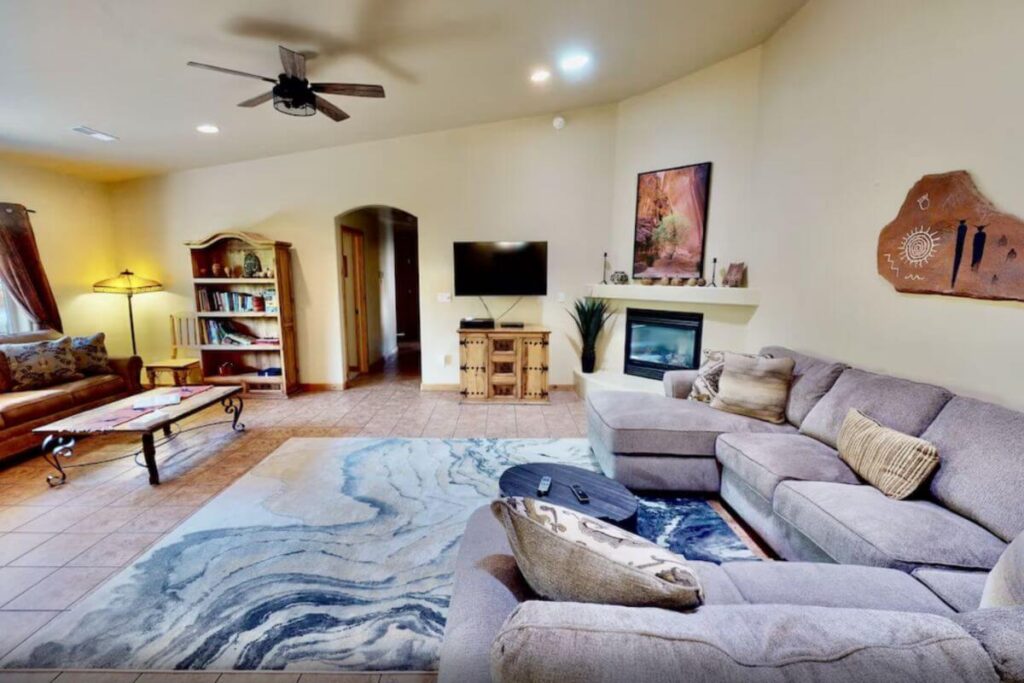
Top Things To Do
There are many things to keep you busy when visiting this national park.
From hiking to mountain biking, kayaking, and stargazing, you’ll find many great outdoor adventures in Canyonlands National Park, even if you’re here just for a day.
Catch the Sunrise of Sunset at Mesa Arch

Watch as hues of red and orange light bounce on the canyonlands at Mesa Arch.
This is a popular spot to catch the sunrise and sunset, so make sure you arrive early. Look through the natural frame to see glimpses of the La Sal Mountains.
Stop At The Canyon Overlooks
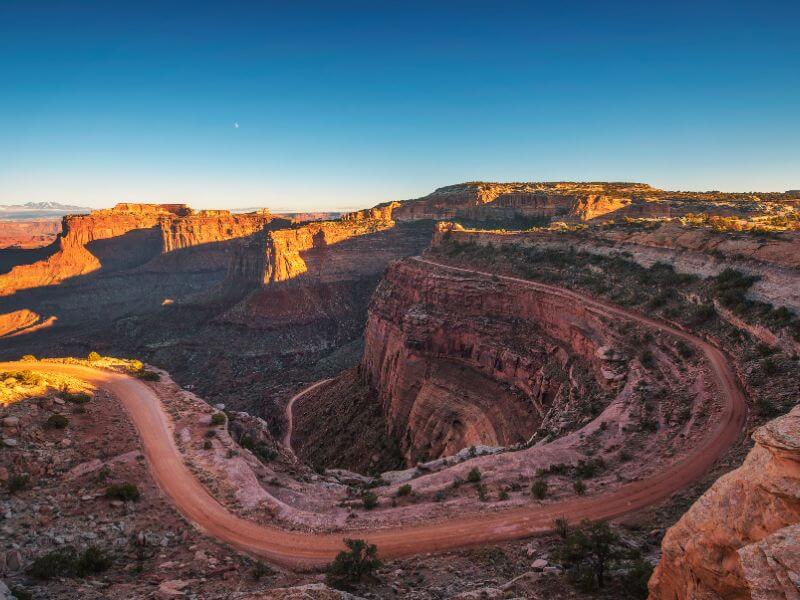
Besides the great viewpoints along the scenic drive, you can also see incredible vistas at other canyon overlooks.
The Dead Horse Point Overlook, Shafer Canyon Overlook, and Buck Canyon Overlook offer views of dramatic canyons and red rock formations.
Go Stargazing

The remoteness of the Canyonlands makes it an excellent spot for stargazing.
On clear nights, the park’s dark skies reveal a spectacular display of dancing stars.
Bring your telescope or join a ranger-led stargazing program to see the glistening celestial bodies up close.
Pop Over to Arches National Park

Start your day early at Canyonlands and then head towards its neighbor, Arches National Park, to witness a mesmerizing collection of natural arches.
The iconic Delicate Arch, Double Arch, Balanced Rock, and Fiery Furnace are must-sees.
Getting to Know Grand Canyon National Park
Similar to the Canyonlands, Grand Canyon National Park is also split into sections. These are called “rims”.
Although not all of them are located within the park, each of these districts of the Grand Canyon offers a unique perspective of the gorge.
South Rim
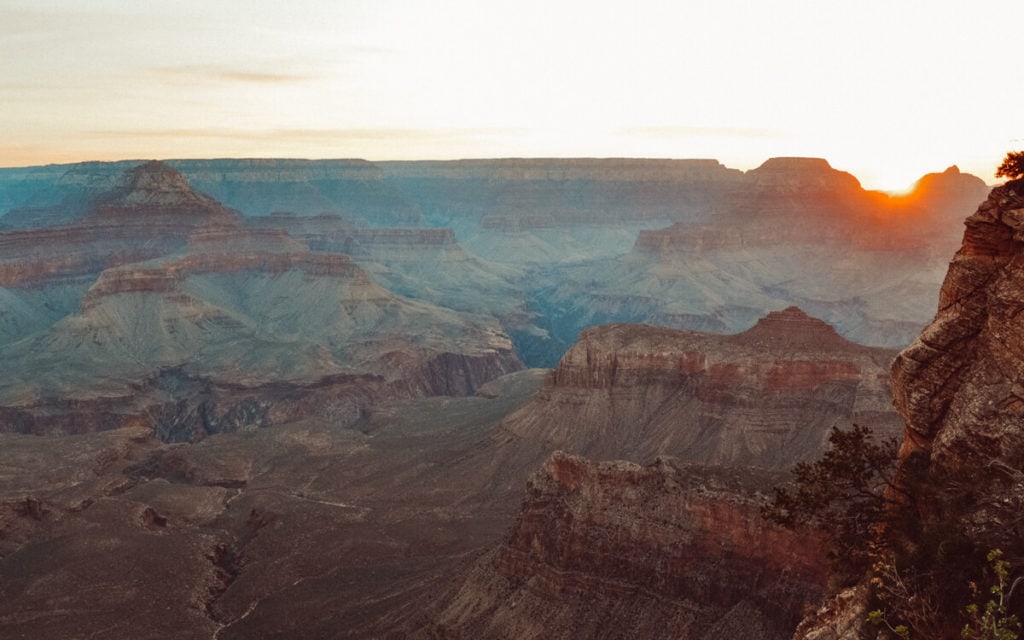
The Grand Canyon’s South Rim is vast and features many viewpoints you’re likely to see on magazine pages and social media. That’s why this park section is often called “the true Grand Canyon”.
The South Rim is where you’ll find most of the activity in the park.
The Grand Canyon Village sits at the heart of the South Rim. It offers lodgings, restaurants, and shuttle stops to some of the park’s most popular overlooks, like Grandview Point and Hermit’s Rest.
You’ll also find the Grand Canyon Visitor Center here, where you can get maps, see topographic exhibits of the gorge, and ask rangers for advice or assistance.
The visitor center is a short hike from Mather Point, one of the park’s most visited viewpoints.
North Rim

With the South Rim attracting about 90% of the park’s visitors, the North Rim is a great alternative if you want to avoid the crowds.
The North Rim is over 1,000 feet higher in altitude than the South Rim. It supports alpine plants and wildlife you won’t see in the South Rim.
The North Rim has a shortened open season, closing in winter due to snow.
While it’s open, you’ll find a lodge that offers food and beverages and a campground for overnight stays.
Some popular overlooks in the North Rim include Bright Angel Point, Cape Royal, and Point Imperial.
West Rim (Grand Canyon West)

This rim lies outside the bounds of Grand Canyon National Park.
The West Rim forms part of the Hualapai Indian Tribal Lands. So, if you’d like to see this part of the canyon, you’ll have to acquire a separate entrance pass.
The West Rim is a part of the canyon that is closest to Las Vegas; hence, the Rim receives a lot of visitors from Nevada.
In fact, the West Rim is the second most-visited part of the canyon.
The most popular attraction in the West Rim is the Skywalk. This glass sky bridge and walkway make for an unforgettable experience, bringing you closer to the canyon wall.
East Rim (Grand Canyon East)

The East Rim is the least-visited section of the Grand Canyon, but that’s not to say that it has fewer attractions and sights to offer.
Located along the Colorado River, the East Rim is the least accessible part of the gorge, making it ideal for fearless adventurers who like smaller crowds.
The most popular attraction in the East Rim is the Little Colorado River (LCR), which is responsible for carving several canyons in the region.
Another must-see in the East Rim is the Horseshoe Bend, where you can watch the most magnificent sunrises and sunsets.
Best Time To Visit
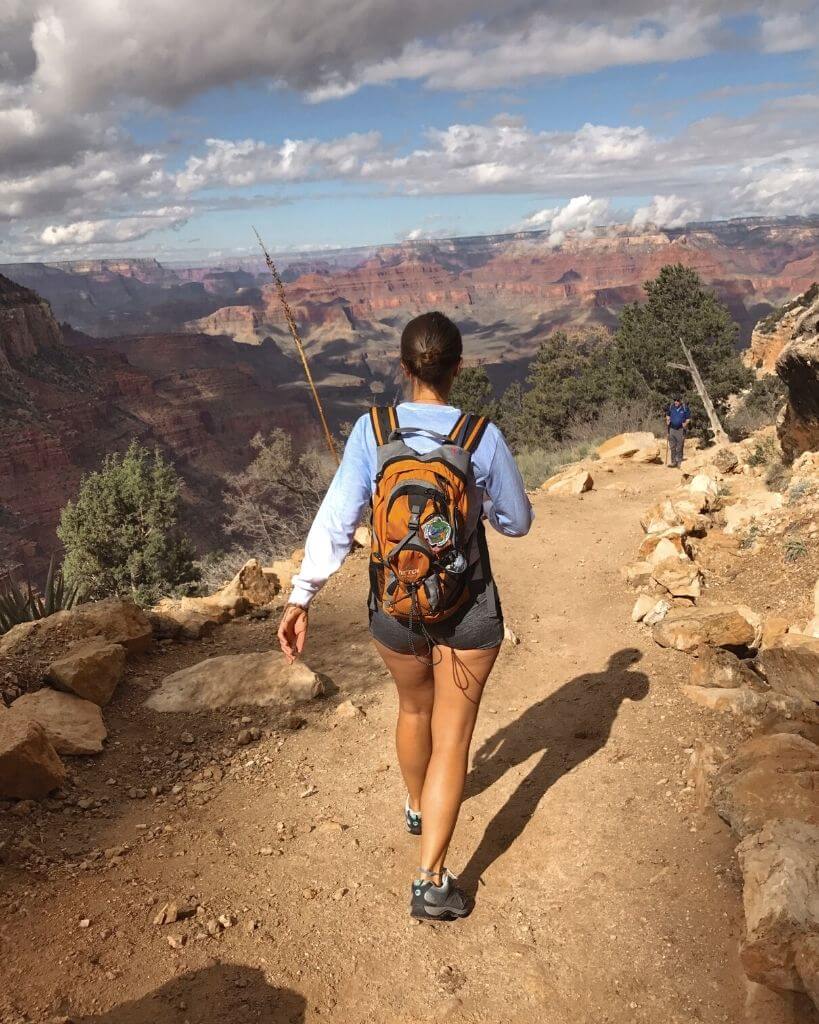
Like Canyonlands, the Grand Canyon experiences sweltering temperatures in the summertime.
The best time to visit this national park is spring (March to May) and fall (September to November).
These are known as the “shoulder seasons” when temperatures are pleasant, crowds are not as frequent, and most of the park is open to visitors.
Where To Stay Near Grand Canyon National Park
The Grand Canyon is massive, so you can access the gorge from different cities. If you’re visiting the West Rim, Las Vegas or Henderson are great places to stay.
But if you’re going to the heart of the Grand Canyon, nearby towns like Flagstaff and Sedona are the ideal places for a home base. You’ll also find several lodgings within the park.
Downtown Carriage House — Stay in a 1920s stone carriage apartment in Flagstaff and enjoy tranquil pleasures like walking through flower-filled grounds and cozying up at the stone fire pit.
Residence Inn — Luxury exudes from every corner of this hotel. You’ll have access to a fitness center, a lobby bar to grab a drink, an outdoor pool, and BBQ facilities, making for a perfect day in Sedona.
Camping — You can stay at several campgrounds within Grand Canyon National Park. The most popular sites, like Mather Campground, are located in the South Rim.

Top Things To Do
The Grand Canyon is one of the most iconic natural wonders, not just in the United States but in the world. There are plenty of activities and attractions to make the most of your visit.
Go Mule Riding
Experience the canyon from a unique perspective by taking a thrilling mule ride.
These are available through guided tours and offer an unforgettable journey into the canyon’s depths.
Explore Grand Canyon Village
The historic Grand Canyon Village is where you’ll find many of the park’s top attractions, like the Grand Canyon Railway Depot, Kolb Studio, Verkamp’s Visitor Center, and the Rim Trailhead.
Take a Helicopter Tour
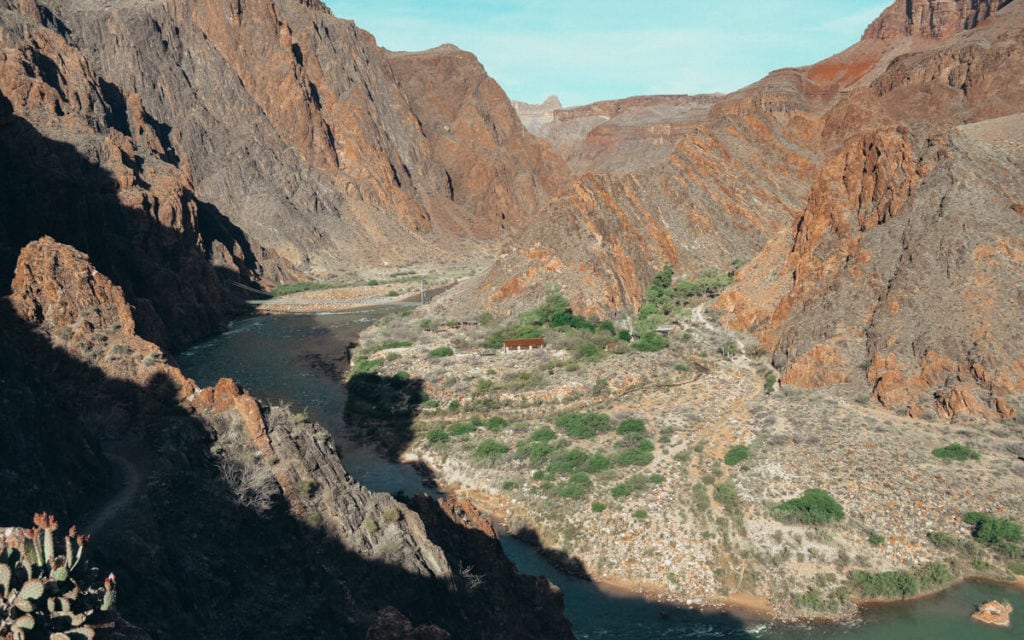
Get a bird’s-eye view of the Grand Canyon by taking a scenic helicopter tour.
This offers you a unique perspective of the gorge and a chance to get a good grasp of the canyon’s vastness.
Visit Hopi House
The Hopi House is a stone structure shaped and built like a traditional Hopi pueblo.
It was designed by architect Mary Colter and gives you a sneak peek into the lives of the Hopi people, with artifacts like pottery jars, thatched baskets, and jewelry laid out for your inspection.
Grand Canyon vs. Canyonlands | Wrapped Up
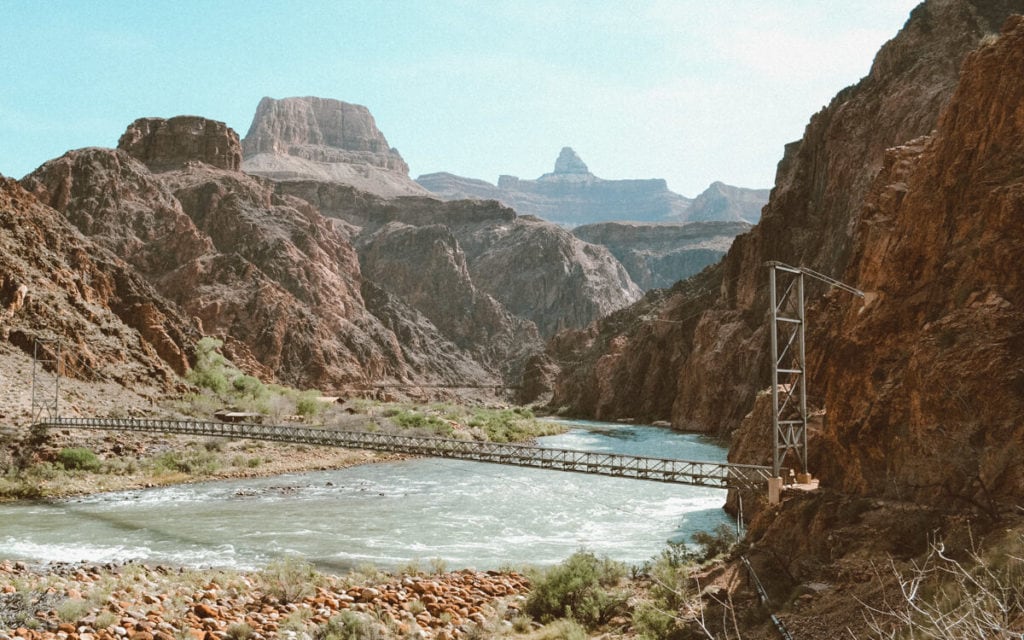
Canyonlands and Grand Canyon National Parks offer some of the most dramatic landscapes of the Southwestern states of Utah and Arizona.
These national parks share a few similarities, like rugged canyon walls, desert shrubs, and sweltering temperatures.
But they also have distinct differences, with Canyonlands being smaller yet more scattered and remote.
In contrast, the Grand Canyon is so vast that some parts of the gorge are not located within the park.
These are important considerations to make before deciding on which park to visit. So, which national park is first on your bucket list?
Next Read: Phoenix to Sedona to Grand Canyon Itinerary